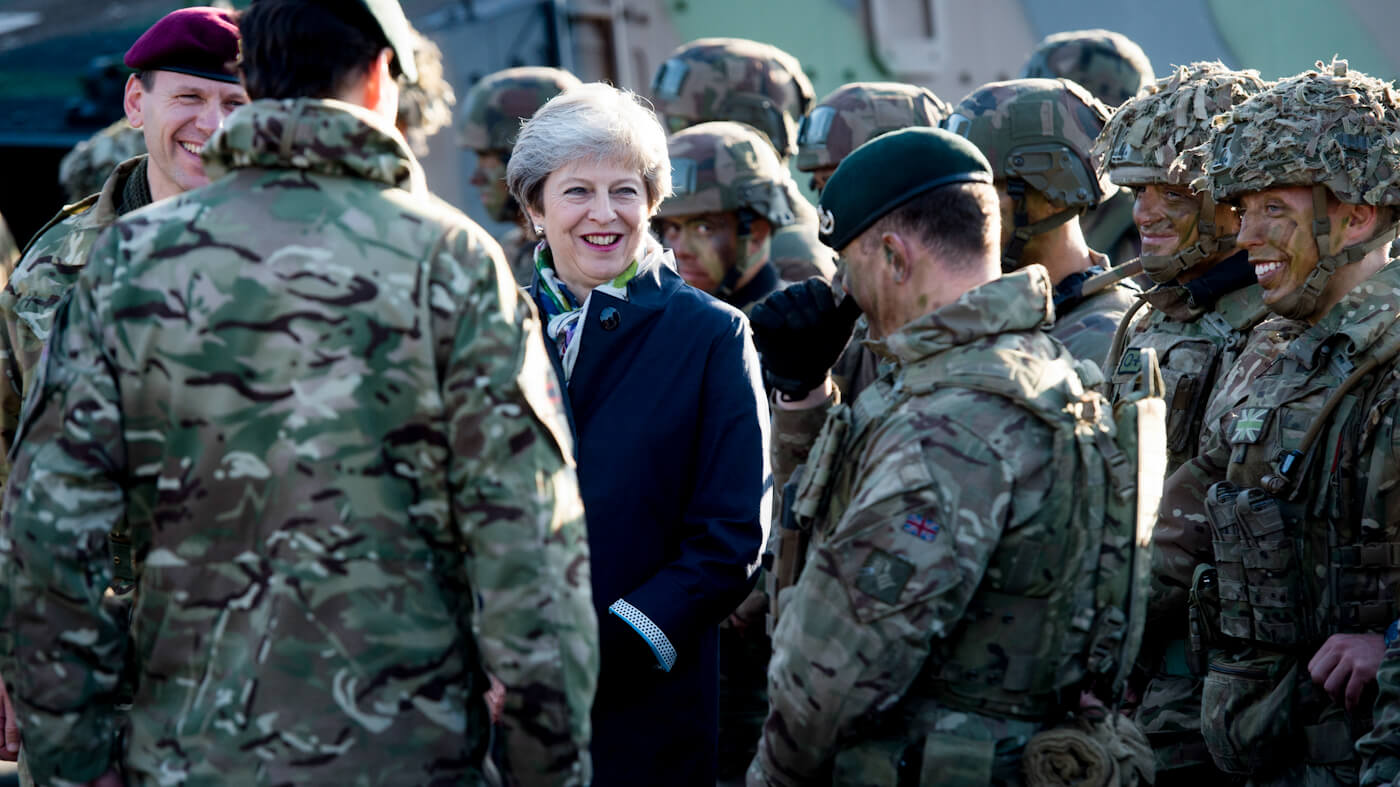LONDON — As the drama over Brexit continues to reach new heights, the U.K. government has raised eyebrows by announcing that it will host 10,000 foreign troops for a massive military exercise beginning the day after Brexit had been set to take place.
The announcement of the exercise has raised the specter of a post-Brexit “martial law” scenario, given that the Theresa May-led government has been examining the possibility of declaring martial law in the country in the event of a no-deal Brexit since at least this January.
According to a government press release, the NATO-affiliated military exercise known as “Joint Warrior” will take place from March 30 until April 11 and will see the U.K. host 10,000 soldiers as well as 35 warships, five submarines, and 59 aircraft and helicopters. Thirteen countries will participate, including the United States, France and Germany, and the exercise will occur in areas spaced throughout Scotland, Wales and England.
Though the exercise has occurred for several years, its timing the day immediately after Brexit has raised concerns that the Tory government may, in fact, enact its publicly acknowledged no-deal Brexit martial-law plan despite claims from Health Secretary Matt Hancock in January that, while such an option exists, it “isn’t the focus of our attention.” When the exercise was announced on March 14, Brexit was set to take place March 29 but, a two-week extension having been worked out with the EU, that date was recently changed to April 12, the day immediately after the exercise is set to end.
Following the extension, Politico reported that the EU had essentially taken control of the Brexit timetable and a “no-deal” Brexit still remains the most likely option come April 12, with some EU leaders giving a Brexit deal a 10 percent chance of passing in Parliament.
Anticipating post-Brexit upheaval
The U.K. government’s martial-law option for Brexit, according to a report published earlier this year by the Sunday Times, would allow government ministers to impose curfews and travel bans, confiscate private property and deploy the armed forces to any U.K. location of their choosing. The plan, according to the Times, was drafted as a means of combating “civil disobedience” that could occur following a “no-deal” Brexit.
Since it was first revealed in January, many members of Parliament have asked that the current government, and specifically Defense Minister Gavin Williamson, rule out the possibility of using martial law in the event of the U.K. leaving the EU in absence of a deal, but the May-led government has refused to rule out the possibility and it remains under consideration.
Given the existence and very real probability of the imposition of martial law following the event of a no-deal or “hard” Brexit, the timing of this massive military exercise is troubling, especially so given that the announcement was made well before the current extension, so that it would have begun on the day immediately following the March 29 date then set for Brexit. Even in light of the recent extension, the threat of post-Brexit unrest the very day that this massive foreign detail is set to wrap up its operations fails to assuage many of those concerns.
Whatever takes place on April 12, it seems clear that both the May-led government and the EU are eager to make the process as arduous as possible in order to keep other nations, like France and Italy, from listening to the sizable portion of their populations that also want out of the EU. Those that want to keep the EU together and powerful — including May, who voted Remain and has hinted that she would do so again — wish to set an example that would chill any future efforts to exit the bloc.
Top Photo | British Prime Minister Theresa May, center, speaks to British soldiers of the NATO Battle Group at the Tapa military base, about 90 kilometers (56 miles) west of Tallinn, Estonia, Friday, Sept. 29, 2017. Marko Mumm | AP


